2023 Dodge Hornet Review: First Drive

FAST FACTS
| Engine: | 2.0L I4 Turbo (GT) 1.3L I4 Turbo + PHEV (R/T) |
| Output: | 268 hp, 295 lb-ft (GT) / 288 hp, 383 lb-ft (R/T) |
| Transmission: | 9AT/6AT, AWD |
| US fuel economy (MPG): | 21/29/24 (GT), N/A (R/T) |
| CAN fuel economy (L/100KM): | N/A |
| Starting Price (USD): | $31,590 (GT, inc. dest.) |
| As-Tested Price (USD): | $42,425 (GT, inc. dest.) |
| Starting Price (CAD): | $40,190 (GT, inc. dest.) |
| As-Tested Price (CAD): | $52,205 (GT, inc. dest.) |
The hills just outside of Asheville, North Carolina are abuzz with word of the first new Dodge in a decade.
Meet the 2023 Dodge Hornet, the American brand’s new compact SUV. It might have a small footprint, but this ride has a big role, including introducing Dodge’s first electrified powertrain into the quickest-growing segment of the market. After taking a few years off from the class, can Dodge rediscover relevance with the gas-only Hornet GT and the plug-in hybrid Hornet R/T? I spent the day driving both around Asheville and its surrounding area to find out.
Get a Quote on a New 2023 Dodge HornetWhat’s new?
Dodge is pitching the Hornet as the quickest, fastest, most powerful SUV you can buy under $30,000 in the US. That’s only technically true, since it doesn’t include the mandatory destination charge of $1,595. For that money you’ll find yourself in the GT, which features a 268-horsepower 2.0-liter turbocharged engine. There’s a healthy 295 pound-feet of torque too, routed through a standard nine-speed automatic to the all-wheel drive system. The only mainstream models that out-flex the Hornet are the much larger (and more expensive) Toyota RAV4 Prime and the barely-disguised hot hatch that is the Hyundai Kona N.
SEE ALSO: 2022 Hyundai Kona N First Drive Review: Pint-Sized Pocket RocketSpeaking of barely disguised, the Hornet is very clearly an Alfa Romeo Tonale with a new-found penchant for jean shorts and yacht rock. The designers have done what they could to differentiate the American product: the vented hood and mail-slot grille are giving Charger, while unique alloy wheels ground the design. Of course, the pair of backslashes replace any Alfa badges, too. The shape itself is handsome enough, with a strong shoulder line and swept-back DLO giving the Hornet an aggressive stance. And this being Dodge, the paint color names are all fun and games: the pictured GT tester is in Acapulco Gold. Other options include the likes of Hot Tamale, Q-Ball, and Grey Cray.
At launch, the hive will include only the GT, but give it a few months and the R/T will fly in for the 2024 model year. This debut Dodge PHEV ditches the 2.0-liter for an even smaller 1.3-liter turbocharged motor. Pairing up for propulsion duties is a rear-mounted electric motor drawing from a 15.5-kilowatt-hour lithium-ion battery pack. Total system output is 288 hp and a Durango-rivalling 383 lb-ft of torque. Full charging takes about 2.5 hours on a Level 2 setup.
Darting through the mountains
The day starts with random car assignments, and I pull a well-specced GT Plus with Track Pack for a trip up into the Blue Ridge Mountains. With that muscular turbo-four and big 20-inch wheels, the Hornet grips and goes better than just about anything at this price point that isn’t a muscle car. It’s so muscular, in fact, that the nine-speed auto can struggle to keep up. Response times are dull, even with the big wheel-mounted Sport mode button pressed, so progress can occasionally be jerky.
SEE ALSO: 2022 Dodge Challenger SRT JailbreakEven still, the Hornet does feel more eager than most other options in the class, with a quick steering ratio and good balance through the corners. There’s some initial low-speed gloopiness from the steering wheel to work past, but afterwards the Hornet is good fun. The Track Pack—optimistically named, I’d wager—adds a two-stage suspension system, with a stiffer setup in Sport mode. The mountain roads around here are begging for a sports car, yet the Hornet holds its own. It’s not as polished as the Mazda CX-5 that Dodge name-dropped in the morning presentation, but that bit of scrappiness gives it character. Brake feel is good, with consistent stopping power even at the end of the long downhill runs.
Plug-in power
After lunch, I get a go in the R/T. Externally, there’s nothing to set it apart visually outside of badging. There are two main changes inside: the Sport mode button has migrated off the steering wheel to make way for an eDrive Modes one, and there are now paddle shifters sitting behind the wheel itself. These are pure Alfa Romeo goodness: actual aluminum, tall for easy access, and with a satisfying activation. eDrive defaults to Hybrid mode, but the driver can choose Electric Mode or E-Save Mode, the latter either maintaining the current charge (Passive) or leaning on the gas engine to recharge the battery (Active).
The Hornet R/T has something of a dual personality. On the one hand, being a plug-in hybrid, the R/T is able to travel around 30 miles (50 km) on nothing but electricity. The flip side to that is something Dodge is calling PowerShot. Pull both of those pretty paddles at once and the R/T does its party trick, sharpening up throttle response and unlocking 30 additional ponies for 15 seconds. You can do it at any speed too, so long as the battery is at about 40-percent or more.
SEE ALSO: 2022 Jeep Compass Trailhawk Review: Quick TakeInitial impressions are mixed: the R/T doesn’t feel appreciably quicker than the GT, since the added power comes with a significant weight penalty as well. That weight makes itself known in corners, where the R/T feels dense. It does sound meaner, however, and those pretty, aluminum shift paddles are a joy to use. The six-speed auto ‘box is more responsive, but the trade-off is wider ratios.
A note about the acceleration times: Dodge quotes a quick 5.6 seconds to 60 mph (96 km/h) for the R/T with PowerShot enabled. The company also says that’s a full 1.5 seconds quicker than the “regular time,” which can’t be the GT, which does the deed in 6.5 seconds. That forces us to conclude that in everyday driving, the R/T is indeed no quicker than the gas-only model.
Close quarters
Alright, so performance sorted, but this is a crossover we’re talking about; how does it work as a family hauler? Dodge calls the Hornet a compact, though like the related Jeep Compass, it’s smaller than most everything else out there. It’s not so noticeable in terms of front head and legroom, but the narrowness of the cabin is a hint. The seats are also pretty narrow, enough to make me question that second piece of bourbon chocolate brownie at lunch. I do really enjoy the feel of the optional Alcantara thrones, however—and the extroverts out there can get bright red leather ones, too.
Pop into the back and it’s a bit of a cave, with a high window line exacerbating the darkness. The cargo area is also on the small side, and folks who go for the plug-in will have to say goodbye to the underfloor cubby.
Material quality is generally good. It’s not as nice as the recently refreshed Compass, but it has a more consistent feel than, say, a RAV4.
Uconnect 5 continues to be one of the very best infotainment systems out there. Dodge fits a standard 10.25-inch central touchscreen in the Hornet, with a subtly different aspect ratio from the unit in the Durango. The main menu controls are now on the left side of the screen, for easier driver access. The custom layout can be a half-and-half or triptych affair, depending on the user’s needs. Folks can save multiple user profiles here, which includes preferences like radio stations and such. Both Apple CarPlay and Android Auto are standard, and wireless to boot. Spec the navigation and it will push turn-by-turn instructions to the 12.3-inch digital instrument panel now, as well.
2023 Dodge Hornet First Drive Review: Dollars and sense
At launch, the Dodge Hornet will be available from $31,590 including destination. If your need plenty of power in an SUV shape, that’s a wicked deal. The GT Plus rings in at a tougher $37,085, but it does add most everything you’d want in the class, like a power liftgate, wireless charging, navigation, heated and ventilated front seats, and an upgraded Harman Kardon sound system.
When the R/T arrives, it will keep those same pricing gap between base and Plus, but with an additional $10,000 on the stickers. It may be eligible for some level of tax credits, however.
Canadian pricing kicks off at $40,190 CAD for the GT, and $46,190 CAD for the GT Plus. R/T pricing will be available closer to release.
Final thoughts: 2023 Dodge Hornet First Drive Review
Ever since the bargain-basement Journey disappeared, Dodge has badly needed a compact SUV. The 2023 Dodge Hornet more closely aligns with the brand’s performance-oriented reputation, with a bit of Italian help. It’s charming, entertaining, and stuffed full of easy-to-use tech. Dodge acknowledges it won’t be for everyone: it’s tight inside, and the material quality doesn’t match up with the best in the class. But shoppers who are looking for an SUV with a bit of character will definitely find that in the Hornet.
FAQs
How much does the 2023 Dodge Hornet cost?
The new model starts from $31,590 ($40,190 CAD) in GT form. The plug-in R/T starts from $41,590.
When can you buy the 2023 Dodge Hornet?
Hornet GTs are now available at dealerships; the 2024 Hornet R/T begins production in April, and will arrive in the summer.
How far can the Dodge Hornet R/T drive in EV mode?
Dodge quotes an all-electric range of 30 miles (50 km) in the Hornet R/T.
Become an AutoGuide insider. Get the latest from the automotive world first by subscribing to our newsletter here.
LOVE IT
- Fun to drive
- Great standard tech package
- Comfy front seats
LEAVE IT
- Tight second row
- Big asking price for top GT and R/T
- R/T not appreciably quicker

Kyle began his automotive obsession before he even started school, courtesy of a remote control Porsche and various LEGO sets. He later studied advertising and graphic design at Humber College, which led him to writing about cars (both real and digital). He is now a proud member of the Automobile Journalists Association of Canada (AJAC), where he was the Journalist of the Year runner-up for 2021.
More by Kyle Patrick



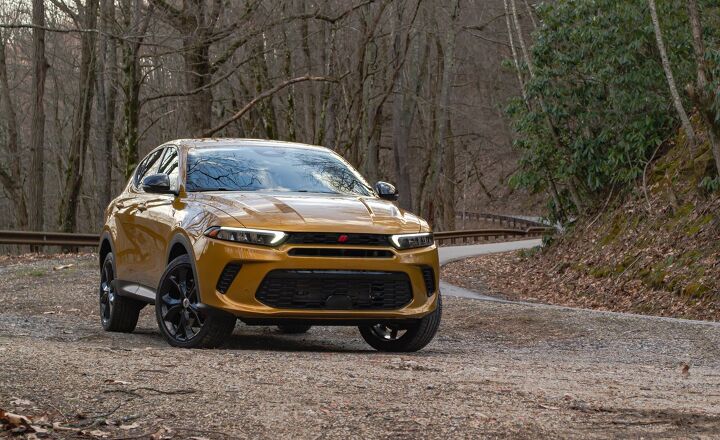
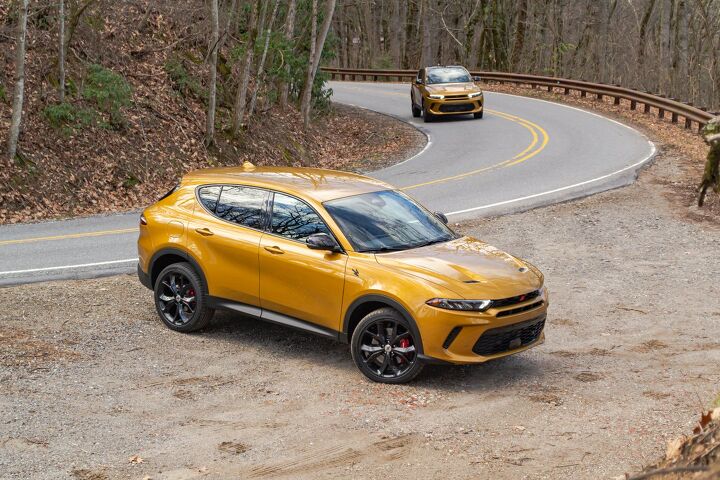






















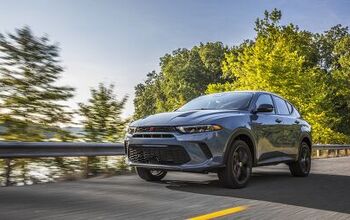
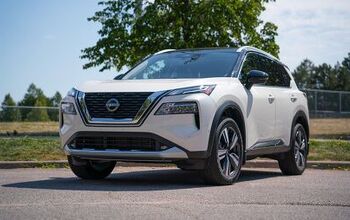
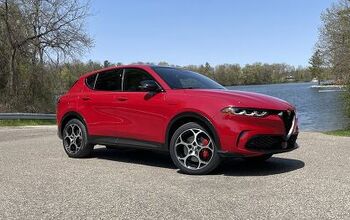
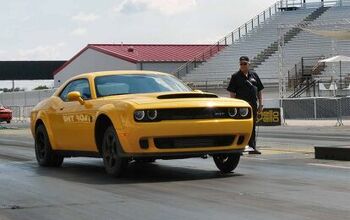











Comments
Join the conversation
Reliability won't be known until after 100k miles as with most modern vehicles. By then most americans will have traded it in for a newer flashier toy.
People whp bought recent Alfa Romeos will tell you reliability or lack thereof can be determined shortly after you bring it home. This seems attractive in a number of areas but I do wonder about the tight interior space. Where is this manufactured?